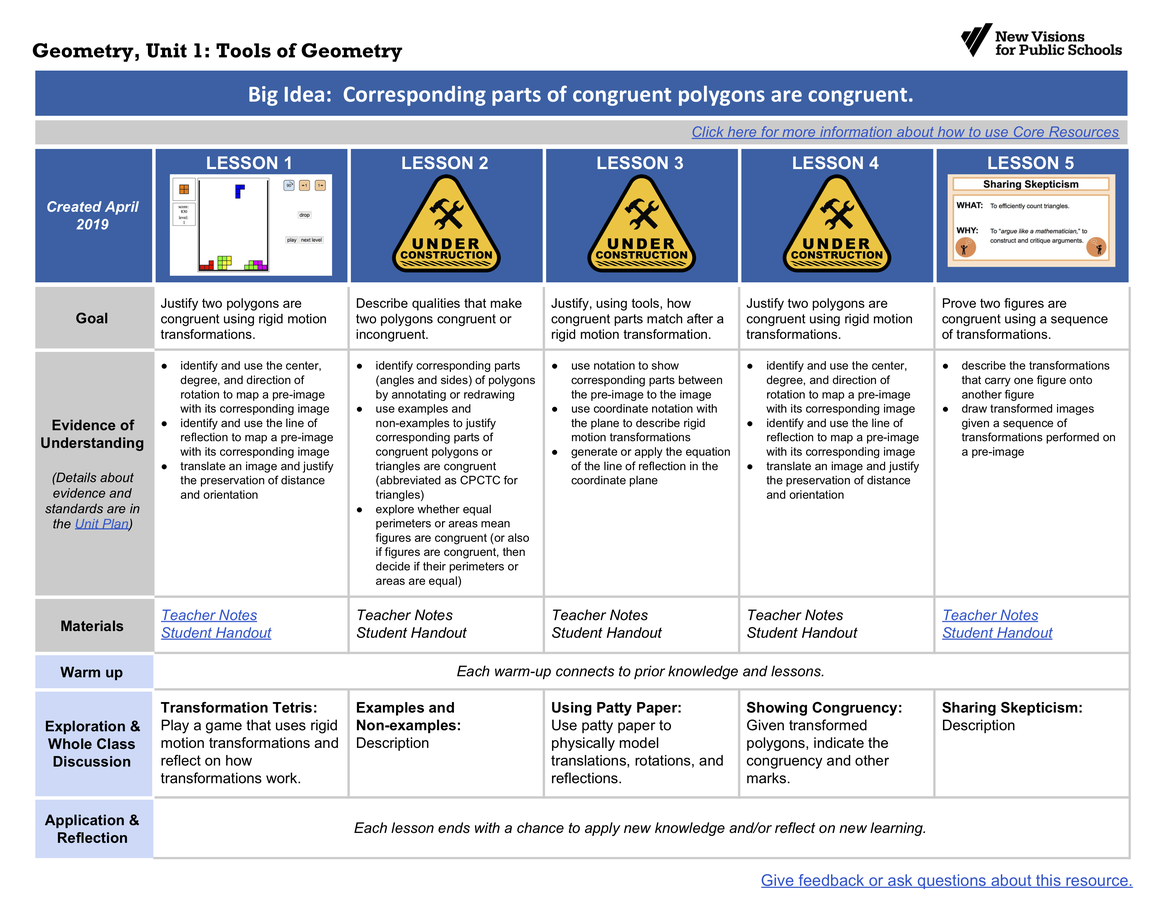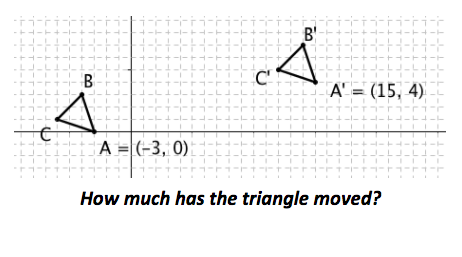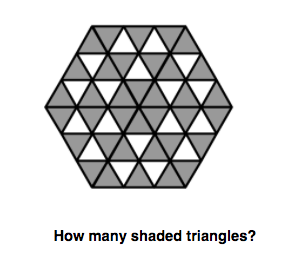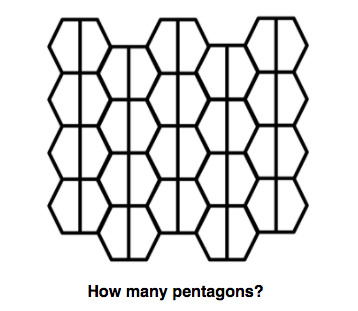Evidence of Understanding
- describe qualities that make two polygons congruent or incongruent
- identify corresponding parts (angles and sides) of polygons by annotating or redrawing
- use tools (patty paper, paper folding, etc. to informally translate, reflect and/ or rotate) to map congruent polygons and place them “on top of” each other
- use notation to signify congruence
- use examples and non-examples to justifythat corresponding parts of congruent polygons and triangles are congruent (abbreviated as CPCTC for triangles)
- explore whether equal perimeters or areas mean figures are congruent (or vice versa: if figures are congruent then decide if their perimeters or areas are equal)
- identify corresponding parts (angles and sides) of polygons by annotating or redrawing
- justify two polygons are congruent using rigid motion transformations
- justify, using tools, how congruent parts match after a rigid motion transformation
- use notations to show corresponding parts between the pre-image to the image
- use coordinate notation with the plane to describe rigid motion transformations
- identify and use thecenter, degree, and direction of rotation to map a pre-image with its corresponding image
- identify and use the line of reflection to map a pre-image with its corresponding image
- generate or apply the equation of the line of reflection in the coordinate plane
- use perpendicular bisectors to draw the line of reflection between a pre-image and its image, or draw the reflected image from a given pre-image and the line of reflection
- translate an image and justify the preservation of distance and orientation
- translate an angle by constructing parallel lines
- determine the translation vector between an image and pre-image (in space or the coordinate plane)
- justify, using tools, how congruent parts match after a rigid motion transformation
- prove two figures are congruent using a sequence of transformations
- describe the transformations that carry one figure onto another figure
- draw transformed images given a sequence of transformations performed on a pre-image
Develop conceptual understanding:
corresponding parts, rigid motion transformations, center of rotation, perpendicular bisectors, pre-image, image, line of reflection, translation vector, parallel lines, sequence of transformations
Supporting terms to communicate:
polygon, translate, reflect, rotate, clockwise, counter-clockwise, congruent, map, carry, construct, function notation, input, output, preserve, orientation



